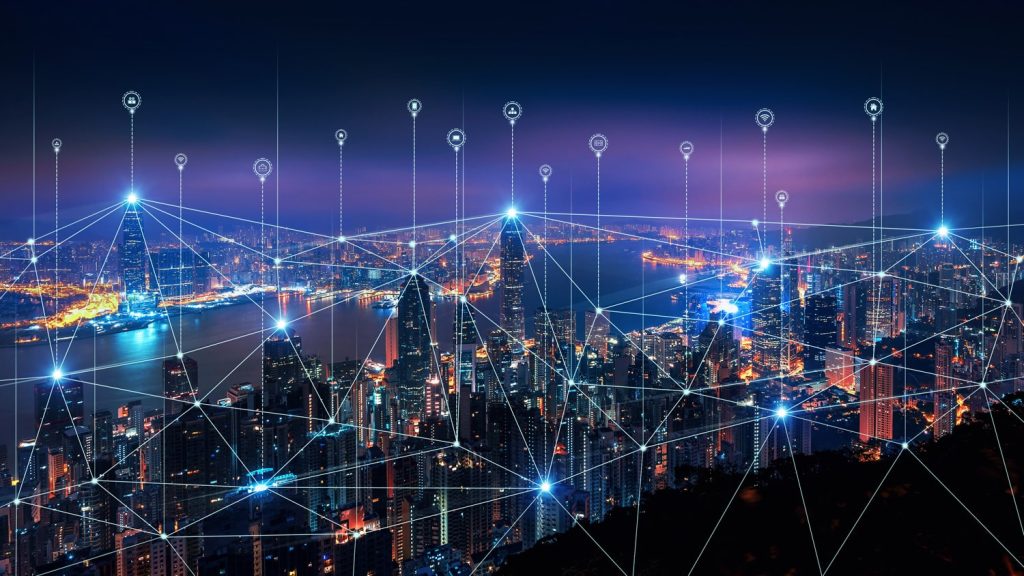“5G is beyond usual telecom operator business; it’s a business revolution”- Borje Ekholm, CEO, Ericsson.

5G HTTP2 Mediation Technology to maximize optical fiber connectivity
The 5G market is currently snowballing, with CSPs deploying optical fiber networks aggressively in North America, Western Europe, & Asia-Pacific. The market share of 5G 2022 is around $3.2 billion in 2022 and is expected to reach $ 16.1 billion by 2026, at a whopping CAGR of 38.2%. This clearly shows that the revenue potential of 5G surpasses that of any other emerging technology currently.
The 5G network brings numerous advanced features. From the core network perspective, 5G features Service Based Architecture (SBA), Control & User Plane Separation (CUPS), Network-Slicing (NS) & Access Agnostic. To make these new features run effectively, a brand-new 5th generation system architecture and protocol stack have been developed called 5G HTTP2 Mediation. Here, the 5G system leverages HTTP2 as the application layer protocol, which will instruct every network entity in the control plane to communicate via HTTP2.
Once optical fibers are integrated with 5G HTTP2 Mediation Technology, then we will be able to maximize the potential of optical fiber connectivity with features like delivering speeds that are 1000x faster than 4G, having low latency, connecting more devices simultaneously, unlocking the full abilities of IoT, and many more. Let’s learn more about 5G HTTP2 Mediation technology so that we can clearly understand its impact on future optical fiber connectivity.
Contents
Challenges faced in deployment of 5G HTTP2 Mediation
HTTP2 Protocol Selection
The HTTP protocol is highly established and can be susceptible to cyberattacks. Although HTTP2 is more secure than its previous version, there are possibilities of new threat vectors emerging for the 5G control plane.
5G Services
The 5G technology is designed to allow numerous business use cases that vary based on high bandwidth, a large number of devices, low bandwidth, and a small number of connected devices. As a result, the 5G HTTP2 Mediation signaling infrastructure might face added pressure when enterprise 5G use cases are implemented.
Signaling Storms & Overload
5G optical fiber networks will face similar challenges to those of previous 4G networks. This is due to the provider/consumer interface model and the higher number of network components due to microservices.
CUPS (Control & User Plane Separation)
CUPS (Control and User Plane Separation) will seemingly reduce the stress in the user plane, which may give rise to a bundle of new types of services and applications. However, these will most probably utilize the NG (Next-Generation) core control plane, leading to higher congestion levels.
Backward Compatibility
NG (Next-Generation) networks must still be interfaced with previous versions of signaling protocols going backward toward SS7 for inbound roaming. 5G signaling networks must be designed correctly from the start, and here, 5G HTTP2 mediation technology will definitely make a huge difference.
Technologies that enable 5G HTTP2 Mediation
To maximize optical fiber connectivity, 5G mediation and network systems will be different from their previous versions at a base level in numerous ways, and the following technologies will be critical to making it happen:
- Virtualization: 5G HTTP2 Mediation technology will operate on a virtualized cloud environment, following Network Functions Virtualization (NFV) principles & standards to facilitate auto-scaling & fault tolerance.
- Network Slicing: 5G will allow CSPs to offer parts of their networks for specific customer use cases like intelligent energy grids, mobile broadband, connected vehicles, etc. Each use case will get a unique set of optimized resources & network topology along with Service-Level Agreement (SLA) specified parameters like connectivity, latency, speed, & capacity that align with the needs of the use case.
Network slicing enables multiple virtual network creations along with shared physical infrastructure. This differs from 4G since all services and use cases utilize the same infrastructure.
- Microservices: To deliver the low to almost zero latency & self-preservation necessary to support 5G, network & charging components that were centralized in previous versions will be shifted closer to the edge of the network edge in a distributed manner. Fewer central monolithic application instances will be eliminated, and multiple smaller, streamlined elements optimized for achieving specific tasks where they are needed will come into play.
Evolving 5G HTTP2 Mediation and Charging standards

5G HTTP2 Mediation and Charging standards
The 3GPP regulations and standards for mediation and charging in 5G vary from previous iterations in the following ways:
- The 4G OCS (Online Charging System) and OFCS (Offline Charging System) are combined into a single logical entity named a Convergent Charging System (CCS)
- The offline CDR generation abilities offered by the Charging Data Function (CDF) & online charging event management presented by the Online Charging Function (OCF) are combined to form the Charging Function (CHF)
- The 4G Diameter interfaced between the CHF and Charging Trigger Function (CTF) is deployed using a new Service Based Interface for 5G, based on 5G HTTP2 Mediation.
Advantages of 5G HTTP2 Mediation Technology Enabled Connectivity

Perks of HTTP2 Mediation Technology
- Vendor specificity no longer required: 5G HTTP2 Mediation Technology will support any supplier’s network equipment & BSS/OSS systems. Standards drive interfaces with additional capabilities to configure proprietary protocols & message formats means that this technology can communicate with any type of system and equipment.
- Protect Charging Systems from 5G traffic congestion: The rapid rise in charging transactions due to 5G use cases like IoT will result in out-of-control network traffic thrown toward the online charging system. But, most of such frequent transactions will be either free of cost or encompass in subscription bundles and hence will not reach the online charging system. This is especially true when CSPs use optical fibers to build 5G networks which will reduce the internet usage tariff significantly.
- Preserve Current BSS Investments: Existing charging interfaces that are dependent on diameter must be upgraded to assist 5G HTTP2 Mediation supported 5G networks. A faster and more cost-effective method would be to utilize a 5G Mediation Solution that can manage the conversion from HTTP2 to Diameter, thereby allowing the existing online charging system and interfaces to co-exist.
- Proven Scalability: 5G HTTP2 Mediation technology is proven in large-scale deployments and can handle billions of daily transactions. This ability will come in handy when there is an unprecedented rise in the transaction numbers to be managed in 5G due to high-traffic use cases like IoT. Full-scale optical fiber deployment integrated with this technology can easily handle any volume of traffic on a daily basis.
- Deployment Flexibility to enable Network Slicing & Microservices: 5G HTTP2 Mediation technology can be installed as a central mediation-driven function spreading across all available 5G network portions or several in-slice instances. The web-operated UI provides the capabilities to monitor, configure and control multiple distributed instances using single slicing.
Conclusion
Integrating 5G HTTP2 Mediation technology is the best move forward to extract the maximum out of the optical fiber connectivity. Once all the bottlenecks related to 5G deployment are overcome, we can experience faster data speeds, lower latency, and connect a huge number of devices at once without hassle. Digital transformation can be accelerated much better by integrating 5G HTTP2 mediation with optical fibers, which are currently the most preferred connectivity modes chosen by most CSPs across the globe.
Reference:
https://www.marketsandmarkets.com/Market-Reports/5g-ntn-market-186116188.html
https://www.nokia.com/networks/core-networks/cloud-signaling-director/
https://ieeexplore.ieee.org/document/8555612
https://www.csgi.com/wp-content/uploads/246_5G_Mediation.pdf













